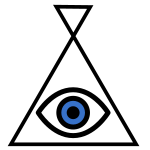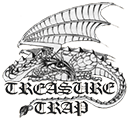Morpheus
Morpheus

| Other names | The Lord of Dreams, Guardian of Shadowflame |
| Alignment | Seal Pantheon |
| Opposite (Sword) | The Light |
| Opposite (Bone) | Teletos |
| Holy symbol | an eye within an upward pointing triangle, with a smaller downward pointing triangle above this, so that the points of the two triangles touch |
the Morphean faith says that dreaming can be used to shape the real world, and I think that if anything has ever proven that to me it’s the fact that the idea of a life where I can live with you, happily, together, forever, now exists.
An excerpt from a love letter written by Lady Vivian Cromwell to her husband, Lord Mortimer Cromwell.
History
The Church of Morpheus’ recent history has been somewhat tumultuous.
He was worshipped by devout followers for a long time, his worship focused in his holy city of Delphi in Hellenia, before he was killed some time around 1286.
Many of his priests were driven mad by his death, or turned to worshipping Luca, the Goddess of Nightmares.
As such, sane and practising Morpheans were a rare sight until around early 1301, when he was re-ascended as a member of the Sword Pantheon. Since then, his popularity has slowly risen, with old followers returning to worship their original Lord, and newer followers arising from a variety of sources.
As the site of his re-ascension, many now claim Durholme to be his new holy city.
Philosophy
The Morphean faith originally taught that the reality seen in The Dreaming, the plane of existence where mortal minds go in their sleep, exceeds the importance of the waking world. Through dreams, one can shape and alter reality, and many Morpheans believe that eventually The Dreaming will supercede this plane of existence.
Morpheans will seek out and interpret dreams, seen as direct messages from their Lord, and some will even practice the art of lucid dreaming in an attempt to shape the plane themselves.
Undead were once seen as truly abhorrent by those of the faith, as they cannot dream, and their strictures once called for the destruction of all undead. In modern times, attitudes towards undead are much more lenient, with sentient undead being seen as more forgivable. Some speculate that this is a reflection of Morpheus joining to the Sword Pantheon, and therefore not wishing to clash with the Pantheon Head, Vivamort.
Strands
The Dreamers
Perhaps the most traditional of the strands, the Dreamers believe in seeking out and pursuing dreams to both better understand reality and to shape it to their will. Heavily influenced by the priestess responsible for the shaping of Morpheus’ strictures whilst he was still dead and for assisting in his re-ascension, this strand actively encourages others to try to understand the deeper meaning behind their dreams, especially through lucid dreaming, and to pursue any dreams they have in their waking life. They also strongly believe in helping the dead find peace, whatever that may be for a given individual.
The Soothsayers
The Soothsayers consists of members originally belonging to the Cult of Shadowflame, who were instrumental in Morpheus re-ascension. The cult were originally dedicated to the worship of Shadowflame, a para-elemental dragon sleeping beneath Durholme believed to be capable of bringing about the end of the world. They worship Morpheus as the guardian and protector of their Lord Shadowflame, who remains in an eternal sleep beneath Durholme, and look forward to the day they can join their Lord in the Dreaming. They believe the Dreaming should be protected at all costs, that all should pass on to the Dreaming, and that it is the place where all can be free, regardless of how destructive you may be in waking life.
The Fantasizers
Similar to those who worship Teletos, the Fantasizers believe in the usage and manipulation of ley power to allow your dreams to manifest in the waking world. The strand exist due to the usage of geomancy and the assistance of an Avatar of Teletos in Morpheus re-ascension, and as such they often work with those who worship Teletos to bring their dreams to life, particularly those within the Restorers faction of that faith. Many work towards the restoration of other dead gods, hoping to restore the dreams of other priests who have lost their deities.
The Hallucinators
This strand consists of those who used to worship Luca, Goddess of Nightmares, who herself was a priestess of Morpheus whilst mortal. Upon her death, many who followed her felt that the world had been plunged into a true, waking nightmare, and worship Morpheus as a bringer of that despair. Others simply felt that nightmares are still a core aspect of dreams, and so converted to the Morphean faith without much issue. Regardless of their exact feelings on the matter, the Hallucinators retain the core beliefs of their now dead faith – that nightmares should be made a reality for all, that mortal law is nothing compared to that of Morpheus, Luca or the Dreaming, and that their motives should never be made clear.
Strictures
Do not destroy the misguided, convert them wherever possible.
Seek to make dreams a reality.
Seek to interpret dreams, for they are the divine messages of Morpheus.
Destroy those who are mindless, for they cannot dream.
Domains
Primary domain: Mind Control
Secondary domains: Debilitation, Dismissal, Divination, Restoration, Warding
